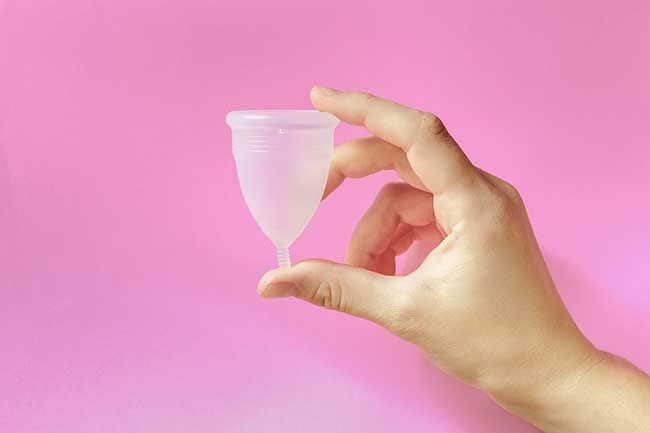How to use the menstrual cup
by Joaquin Velazquez Marketing Its use is spreading. If you have considered trying it, it will be good for you to know some details and the data of a recent study that confirms that it is safe, effective and without health risks. On the contrary, those who have tried it no longer choose any other system.The menstrual cup has become an ally of all women today, but despite this, much is still unknown about its use and benefits. That's why our friends at Angelcup Mexico, will tell us a little about it.

How to use the menstrual cup
The menstrual cup is comfortable, healthy, reusable, economical, ecological, suitable for women of all ages... But then, why is it not used more?
In fact, if in recent times it is becoming popular is mainly thanks to the "word-of-mouth" and its marketing on the Internet.
- Its use is spreading for hygienic, health and environmental reasons, but it is not yet a popular method, probably due to lack of information for consumers.
- Even so, a study by the Intimina brand has shown that in Europe, Spanish women are the ones who use the cup the most; they are followed by Portugal and the United Kingdom. Swedish and Italian women are the last in this ranking of usage habits.
In fact, if in recent times it is becoming popular is mainly thanks to the "word-of-mouth" and its marketing on the Internet.
Do gynecologists recommend the menstrual cup?
A recent study published in The Lancet has gathered enough data to confirm that the use of the cup does not imply a greater risk of infections than other intimate hygiene products, that it is a safe and effective method and that 70% of the women who have tried it already choose it as their first option.
Dr. Santiago Palacios, gynecologist and director of the Palacios Institute of Women's Health and Medicine in Madrid, notes that "there are still not a majority of gynecologists who recommend it, mostly due to lack of information. Probably one of the reasons why it has not spread before is that many years ago the material used was latex, which caused allergy or discomfort to some women. But now they are made of medical silicone, which is a bio-healthy material, avoids irritation and allergies and has no health risks.
In line with this international study, Dr. Palacios points out that "in Canada and South Africa, where the use of the cup has been widespread for years, research has been carried out and there are already two studies that show that it carries less risk of infections due to bacterial vaginosis".
It "works" from the first day of menstruation
Dr. Palacios values as great advantages "especially for women who have heavy periods and spend many hours away from home, the convenience of wearing a cup; and if there is no place to clean it, a spare cup. In addition, it is suitable from the first day of the period, even when it has not come down".
On the other hand, she acknowledges that "there are women who at first think it is complicated to insert and remove, but it is not. In fact, its use helps the woman to get to know her vagina better and to get used to manipulating it. For all these reasons, Dr. Palacios is convinced that "more and more gynecologists will recommend the menstrual cup and it will end up being a great success, because it is more comfortable and beneficial for women".
the main advantages of the menstrual cup
The cup collects the flow instead of absorbing it as tampons do, so it does not leave traces of fibers and, therefore, does not produce alterations in the natural vaginal environment.
A recent study published in The Lancet has gathered enough data to confirm that the use of the cup does not imply a greater risk of infections than other intimate hygiene products, that it is a safe and effective method and that 70% of the women who have tried it already choose it as their first option.
Dr. Santiago Palacios, gynecologist and director of the Palacios Institute of Women's Health and Medicine in Madrid, notes that "there are still not a majority of gynecologists who recommend it, mostly due to lack of information. Probably one of the reasons why it has not spread before is that many years ago the material used was latex, which caused allergy or discomfort to some women. But now they are made of medical silicone, which is a bio-healthy material, avoids irritation and allergies and has no health risks.
In line with this international study, Dr. Palacios points out that "in Canada and South Africa, where the use of the cup has been widespread for years, research has been carried out and there are already two studies that show that it carries less risk of infections due to bacterial vaginosis".
It "works" from the first day of menstruation
Dr. Palacios values as great advantages "especially for women who have heavy periods and spend many hours away from home, the convenience of wearing a cup; and if there is no place to clean it, a spare cup. In addition, it is suitable from the first day of the period, even when it has not come down".
On the other hand, she acknowledges that "there are women who at first think it is complicated to insert and remove, but it is not. In fact, its use helps the woman to get to know her vagina better and to get used to manipulating it. For all these reasons, Dr. Palacios is convinced that "more and more gynecologists will recommend the menstrual cup and it will end up being a great success, because it is more comfortable and beneficial for women".
the main advantages of the menstrual cup
The cup collects the flow instead of absorbing it as tampons do, so it does not leave traces of fibers and, therefore, does not produce alterations in the natural vaginal environment.
- Being made of medical silicone or TPE, it is very soft and flexible, so it does not scratch or dry out the vaginal walls.
- It provides up to 12 hours of comfortable protection without having to constantly change it (depending on each woman's flow).
- With proper maintenance, its lifetime is between 10 and 15 years and its price is very affordable, between 20 and 30 euros.
- It is much more environmentally friendly than tampons and pads. A cup can be used unlimited times without generating a single waste, so with it you contribute to preserve the environment.
- The cups could also help prevent problems caused by the use of pads, such as candidiasis (caused by the warm, moist environment a pad creates) and cystitis (which can occur if stool in the pad carries E. coli bacteria into the urethra or vagina).
- They do not absorb but collect the blood, so they do not absorb vaginal mucus and therefore do not dry out and do not alter the natural bacterial flora of the area.
How to use the menstrual cup
The menstrual cup is inserted folded in the vagina and, once inside, it recovers its natural shape and adapts to the anatomy of each woman. You can use a little lubricant to insert it, as many times as necessary, as it does not harm the cup.

The menstrual cup is inserted folded in the vagina and, once inside, it recovers its natural shape and adapts to the anatomy of each woman. You can use a little lubricant to insert it, as many times as necessary, as it does not harm the cup.
- Its capacity is 30 ml, that is, the third part of the volume of blood that a woman loses on average in each menstruation, so you can stay up to 12 hours without emptying it.
- While you have your period, every time you remove the cup you should empty it and rinse it with water.
- And when menstruation ends, sterilize it with boiling water or using a method such as the one used for baby bottles. This will eliminate any bacteria that may be acquired during handling.
- In any case, while it is in the vagina, no bacteria can remain on its totally smooth surface, which does not absorb any liquid.
- Always keep it in a cotton bag (many brands even include it with different prints), but never in airtight or glass containers. It is important to keep it in a place where it is neither too hot nor too cold, and where it is not exposed to the sun: this will prevent it from losing color and will keep its properties intact.

Sponsor Ads
Created on Mar 31st 2022 10:25. Viewed 285 times.
Comments
No comment, be the first to comment.



